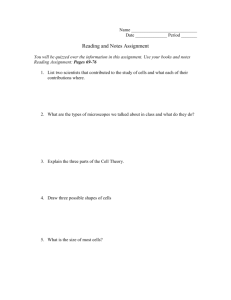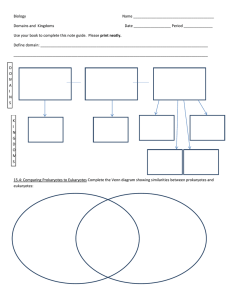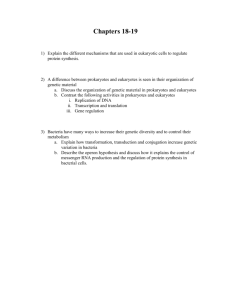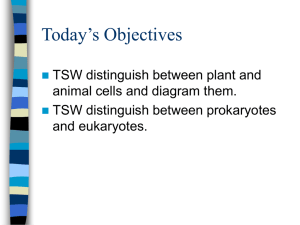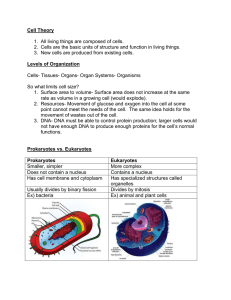LP Eu Pro and punnett suare practice tiered
advertisement
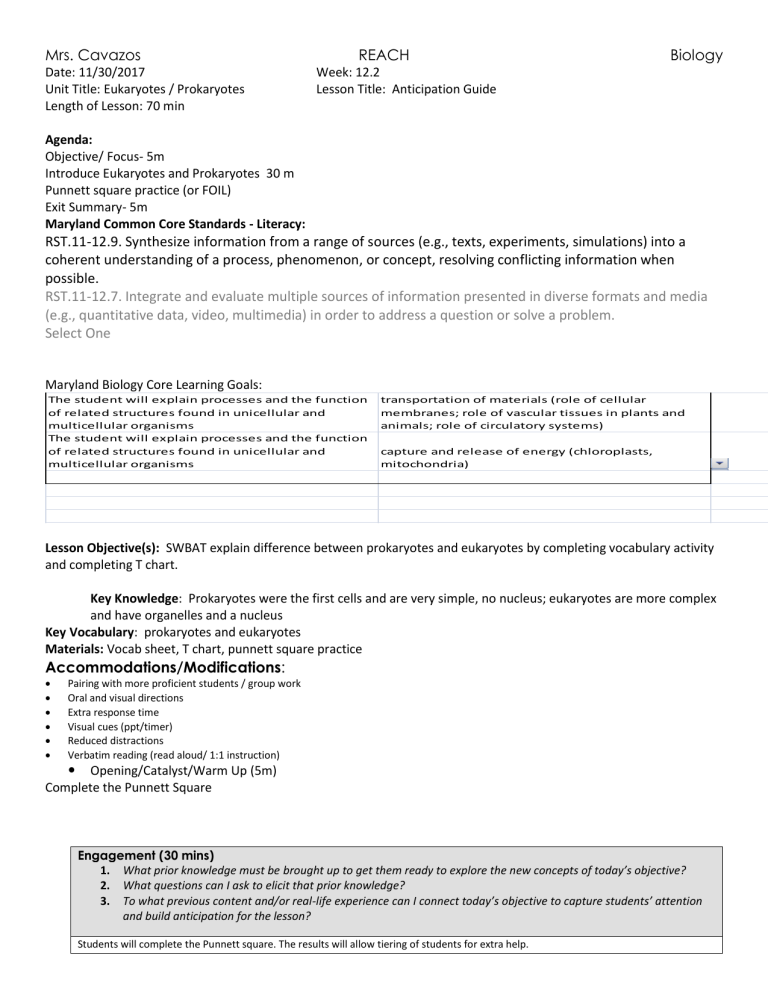
Mrs. Cavazos Date: 11/30/2017 Unit Title: Eukaryotes / Prokaryotes Length of Lesson: 70 min REACH Biology Week: 12.2 Lesson Title: Anticipation Guide Agenda: Objective/ Focus- 5m Introduce Eukaryotes and Prokaryotes 30 m Punnett square practice (or FOIL) Exit Summary- 5m Maryland Common Core Standards - Literacy: RST.11-12.9. Synthesize information from a range of sources (e.g., texts, experiments, simulations) into a coherent understanding of a process, phenomenon, or concept, resolving conflicting information when possible. RST.11-12.7. Integrate and evaluate multiple sources of information presented in diverse formats and media (e.g., quantitative data, video, multimedia) in order to address a question or solve a problem. Select One Maryland Biology Core Learning Goals: The student will explain processes and the function of related structures found in unicellular and multicellular organisms The student will explain processes and the function of related structures found in unicellular and multicellular organisms transportation of materials (role of cellular membranes; role of vascular tissues in plants and animals; role of circulatory systems) capture and release of energy (chloroplasts, mitochondria) Lesson Objective(s): SWBAT explain difference between prokaryotes and eukaryotes by completing vocabulary activity and completing T chart. Key Knowledge: Prokaryotes were the first cells and are very simple, no nucleus; eukaryotes are more complex and have organelles and a nucleus Key Vocabulary: prokaryotes and eukaryotes Materials: Vocab sheet, T chart, punnett square practice Accommodations/Modifications: Pairing with more proficient students / group work Oral and visual directions Extra response time Visual cues (ppt/timer) Reduced distractions Verbatim reading (read aloud/ 1:1 instruction) Opening/Catalyst/Warm Up (5m) Complete the Punnett Square Engagement (30 mins) 1. What prior knowledge must be brought up to get them ready to explore the new concepts of today’s objective? 2. What questions can I ask to elicit that prior knowledge? 3. To what previous content and/or real-life experience can I connect today’s objective to capture students’ attention and build anticipation for the lesson? Students will complete the Punnett square. The results will allow tiering of students for extra help. Mrs. Cavazos REACH Biology 2. Explore (30 mins) 1. What must students be doing and thinking to discover the key points through their doing instead of my telling? 2. How can I set up an experience to allow my students to do and think these things? 3. What questions must I ask to guide their thinking to arrive at the key points? 4. How are students pushed to develop the explanations or solutions I am looking for? 5. How and where are students recording information/data? 6. How will I ensure that all students are not just participating in the activity, but engaging in the thinking required to arrive at the key points? Students will complete the vocab activity learing about eukaryotes and prokaryotes. Teacher will stress the OO sound and eu in eukaryote and nucleus 3. Explain ( 20 mins) 1. How will I set students up to create accurate explanations and justify them with evidence? 2. How will students share and engage in the findings of their classmates (whole class or smaller groups)? 3. How will students receive information on formal definitions, labels, rules and procedures – and record in a way that makes sense? 4. How will students compare their explanations to formal definitions and rules so that they make sense of their own experience? 5. What misunderstandings do I anticipate students still having and how can I correct them? 6. How will I know when students understand? What questions must they be able to answer? Students will separate into groups based on their ability to complete a Punnett Square. The students will either work on their own, cooperatively as a group, or with the teacher to solve Punnett Square practice. 4. Extend ( 35 mins) 1. How will students use their new definitions, rules, and skills to investigate or solve problems in a new, yet similar situation? 2. How will I scaffold my support and include whole class, group, and individual checks for understanding? 3. How will I ensure that students are able to apply their knowledge in an increasingly independent (and eventually independent) way? Students will complete the graphic organizer determining if an item is a prokaryote or an eukaryote 5. Evaluate ( 5 mins) 1. How will students show mastery of the objective? 2. If students will be self-evaluating their efforts and abilities, what are the guidelines they will follow? Students will answer questions about eukaryotes and prokaryotes What organelle is responsible for choosing what is exchanged into and out of the cell? What organelle is responsible for providing the energy a cell needs? What is the control center of the cell? Homework:
